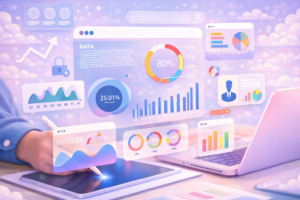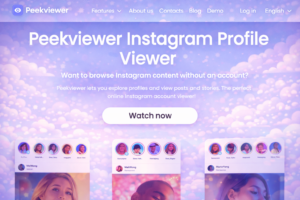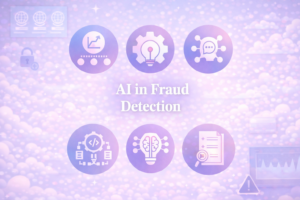Pharma marketing is coming of age. Companies are exploring omni-channel marketing to connect to audiences in new ways.
They are crafting tailored content specifically suited to the environment and the audience.
The power of video on social media is allowing even smaller companies to create multimedia content for a more powerful impact.
Another significant change in the way pharma companies implement content marketing is the integration of artificial intelligence.
According to eMarketer’s “Generative AI for Pharma Marketing” report (May 2025), more than 73% of pharma marketers are already using GenAI for communications and creative, and nearly 63% for content production.
The benefits are obvious: tremendous gains in speed and productivity that free up time for creative thought and new projects.
However, using AI for content marketing in this sensitive public-facing sector needs a few underlying precautions.
1. Exercising Caution to Maintain Privacy
Pharma marketing often evokes strong reactions in people: how can one trust entities that share information for commercial gain?
Moreover, as content formats and themes evolve, many firms use data from clinical trials and patient case studies.
Maintaining safety in using sensitive data, particularly in the context of AI, can be tricky.
A rather unsettling research study was published in the JAMA Network earlier this year.
Researchers from Women’s College Hospital, Toronto, found that some private companies sell patient medical data to pharmaceutical firms.
The patients are not included in deciding how this data will be used. The outcome is likely to be a rising influence of the pharma industry on care.
If such data ends up as input for AI models, the chances of a breach increase significantly.
The HIPAA Journal notes that numerous healthcare workers expose protected health information (PHI) to common GenAI tools, such as ChatGPT and Gemini.
It is a legitimate problem since about 88% of the surveyed organizations have integrated cloud-based GenAI apps into their operations.
Undoubtedly, AI can bring massive productivity gains to pharma marketing by reviewing large volumes of information and summarizing it in succinct terms.
McKinsey observes that generative-AI tools can produce a first draft that is ‘about 80% right’ when working from protocols, statistical-analysis plans, and tables/listings, substantially cutting medical writing turnaround from days to minutes.
Content writers can make the necessary corrections and submit the work at a much faster pace. It is an advantage one cannot overlook, since pharma content typically involves statistics, tables, and figures.
Pharmaceutical companies can experience these benefits responsibly by upping their commitment to patient privacy.
- Ensure that marketing content does not violate relevant data protection regulations, such as HIPAA (Health Insurance Portability and Accountability Act) and GDPR (General Data Protection Regulation).
- Build feedback loops to vet content by human experts and the organization’s regulatory team.
- Embed guardrails in the GenAI model to prevent final decision-making until verified by the responsible human.
2. Ensuring Completeness of Alleged Product Claims
Pharma marketing primarily stresses the benefits of the product, i.e., its claims of managing a health condition. Content marketing plans may choose to highlight these benefits through linkages to trusted scientific studies.
However, any product claims must be supported by valid evidence, such as peer-reviewed publications or trial results.
When using GenAI tools to create marketing content, the priority should not be restricted to the firm’s branding guidelines, but also the completeness of the shared information.
A PwC feature assesses that some product claims may apply globally but not locally due to variations in trial design and regulatory guidance.
Similarly, some regulatory requirements may prescribe messaging guidelines that require clarifying the risks alongside the benefits.
Consider the example of Pfizer. The pharma giant’s contraceptive injection, Depo Provera, allegedly raises brain tumor risk in its users.
TorHoerman Law Depo Provera lawyers note that while the company has updated its product label in Europe and Canada, this information remains missing in the United States.
GenAI tools depend on training data to generate content. One can infer that the output may be biased or incomplete if the data used for training was.
Accordingly, trusting these tools completely for website or social media content can be short-sighted.
The likelihood of glossing over or omitting information related to risks, essential for pharmaceutical products, is high.
Instead, one can use GenAI with a grain of salt, using it to complement but not replace human effort.
- Partner with enterprise-grade AI tools that use balanced and unbiased data with periodic upgrades.
- Conduct human-driven auditing of content generated by GenAI to eliminate inauthentic or poor-quality output.
- Parse all AI-generated content through an MLR (Medical, Legal, and Regulatory) review process.
- Be sceptical of AI-detection and humanizer tools, using them sparingly in view of their nascent stage in development.
3. Multi-Department Upskilling to Optimize and Safeguard AI Use
The pace of adoption of AI across sectors has been phenomenal, to say the least. It has left many employees feeling overwhelmed and underskilled to keep up.
In content marketing endeavors, the onus for staying abreast with new technologies often falls on the “core” team members.
However, restricting the scope may not be optimal in a complex and layered sector like pharma.
For example, consider the launch planning of a new drug for back pain.
Artificial intelligence can be a lifesaver here, analyzing current market dynamics and historical sales to inform the launch.
The content team must coordinate with these guidelines, focusing on various aspects of the story.
- Tying up with an influencer on ergonomic furniture design to communicate when medical intervention may be necessary for pain relief.
- Launching an opinion poll to highlight how back pain interferes with daily life.
- Collaborating with the event team for the launch to identify social media opportunities.
AI can assist with all of these areas, recommending influencers, generating survey questions, and analysing social media sentiment.
Employer-led training opportunities must cover members of the corresponding teams (digital marketing and event planning, in this case).
According to a Forbes feature, upskilling initiatives should cover AI literacy and data governance.
Including more employees in these programs can encourage innovation within the organization without affecting security and compliance.
As more pharmaceutical companies adopt AI for content marketing, understanding the underlying risks has become crucial for success.
Commercial pharma experiences higher scrutiny from regulatory agencies like the US FDA (Food and Drug Administration).
The advertising and promotional materials of these pharma companies must comply with and meet stringent standards.
Accordingly, such firms must be extra careful when integrating AI into their communication and content.
The balance is precarious, but the benefits of artificial intelligence can make it well worth the effort.








